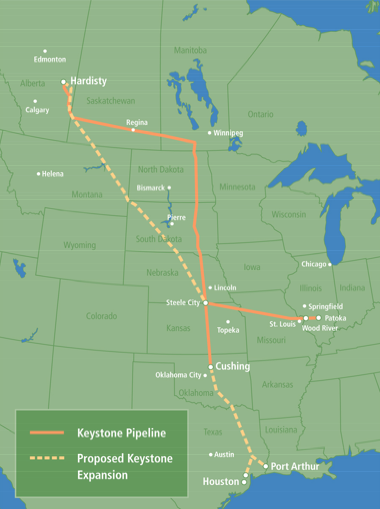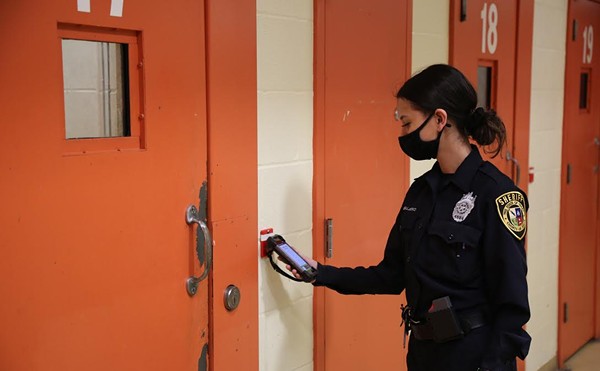Greg Harman
On the way to becoming the largest offshore disaster in history, the BP Deepwater spill has all eyes on the Gulf as the first globs of oil have begun to wash ashore. Public calls for an offshore drilling moratorium have not only gone unanswered, federal regulators have continued to dish out dozens of environmental waivers to offshore drilling companies.
While an estimated 210,000 gallons of toxic crude now spill into the host waters of the nation's most prolific fishery each day, the well-televised horror known as BP's Deepwater is not the end of our petro problems. Every year on our northern flank an estimated billion gallons of liquid wastes leak out of containment ponds across the Canadian tar sands.
Now the product of that nightmare is headed to Texas.
 In what would be one of the North America's largest pipeline networks, TransCanada's proposed 36-inch Keystone pipeline is expected to cross the U.S. Midwest atop the nation's largest freshwater aquifer and 91 streams on the way to Port Arthur and Houston.
In what would be one of the North America's largest pipeline networks, TransCanada's proposed 36-inch Keystone pipeline is expected to cross the U.S. Midwest atop the nation's largest freshwater aquifer and 91 streams on the way to Port Arthur and Houston.
Creating liquid fuels from the tar sands involves massive strip mining operations. It takes the removal of four tons of sand and overlaying rock to produce each barrel of oil. Each barrel of crude further requires massive amounts of natural gas and water to separate the bitumen, a process that emits up to four times the amount of greenhouse gases of more traditional oil extraction processes.
Assuming the gathering complaints of cancer clusters and territorial lawsuits by indigenous groups don't slow the Keystone, Texans should be watching the pipeline, which could enter the state early next year.
“They have applied that they would use thinner pipe than standard and operate the pipe under a higher pressure than standard,” said Kate Colarulli, director of the Sierra Club's Dirty Fuels program. “The pipeline and how the pipeline is built is very concerning, and I think it's very important particularly for those landowners. But from my perspective what's even more concerning is what's in those pipelines.”
After the heavy bitumen is mixed down into synthetic crude for transport, the product remains far heavier and dirtier (ie. more heavy metals, more sulfur, more nitrogen oxide) than typical crude oil. “A leakage from this, from tar sands, is going to have a bigger impact than leakage from regular oil,” Colarulli said.
Texans know something about busted pipes. Since January 1, 2009, roughly 253,000 gallons of crude oil have been spilled across the state in five separate events reported to the National Response Center.
“It's sort of flying under the radar right now, sort of one of those unreported environmental problems,” Colarulli said. And yet four public meetings are being held from Beaumont to Tyler this month, starting on the May 17.
Want to see where the pipeline would go?
Wondering where to speak your mind, according to the Federal Register:
Tuesday, May 18, 2010, 7 to 9 p.m., Liberty, Texas, VFW Hall, 1520 North Main Street, Liberty, TX 77575.
Wednesday, May 19, 2010, 7 to 9 p.m., Livingston, Texas, Livingston Junior High School, 1801 Highway 59 Loop North, Livingston, TX 77351.
Thursday, May 20, 2010, 7 to 9 p.m., Tyler, Texas, Ramada Hotel and Conference Center, 3310 Troup Highway SE. Loop 323 & Highway 110 North, Tyler, TX 75701.















